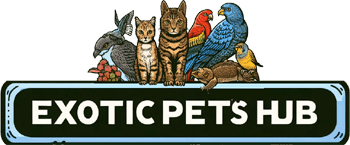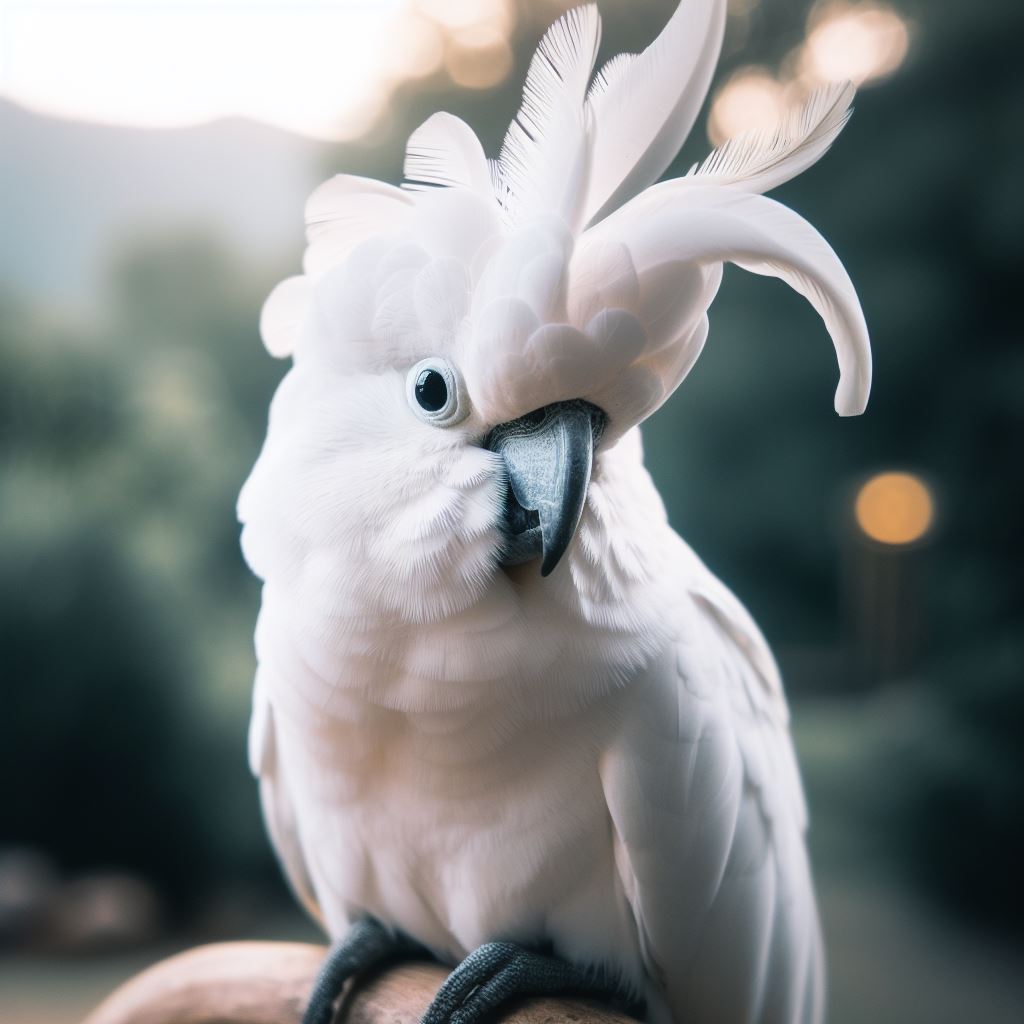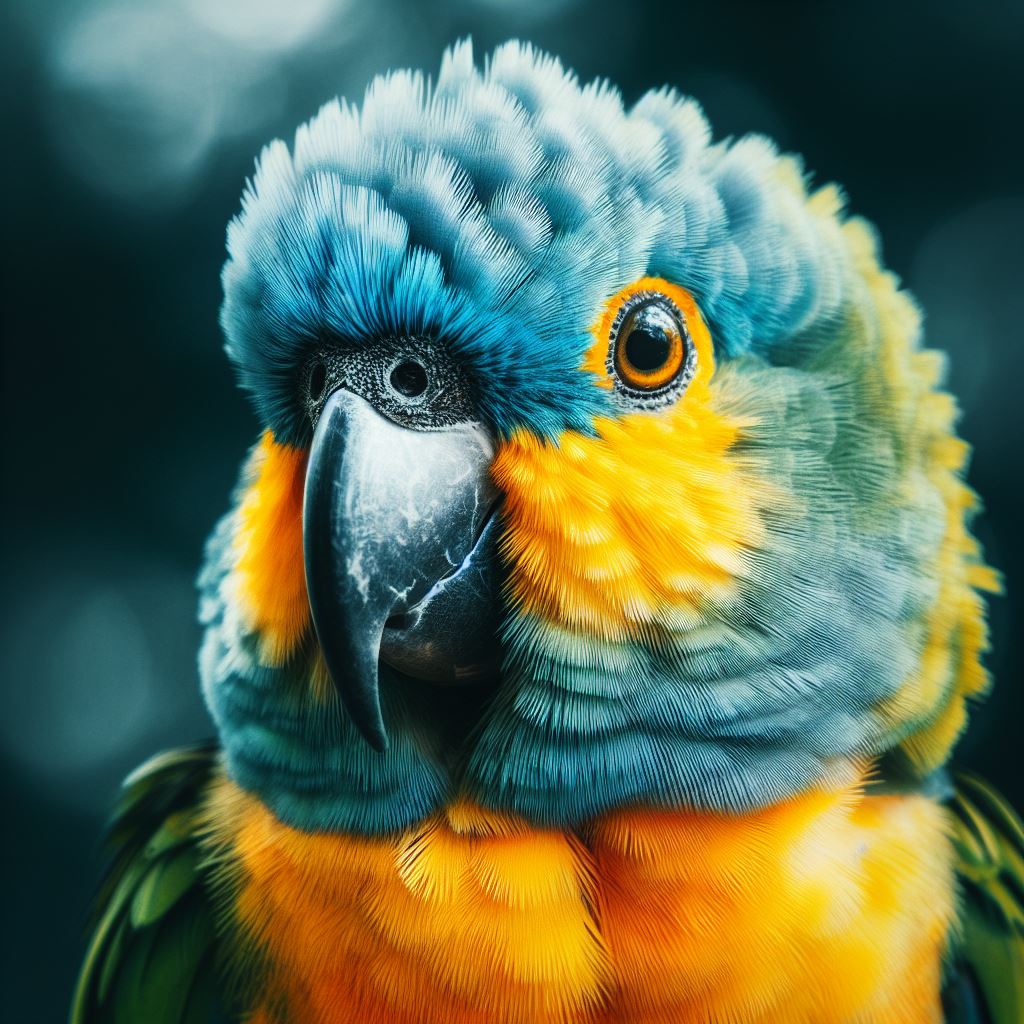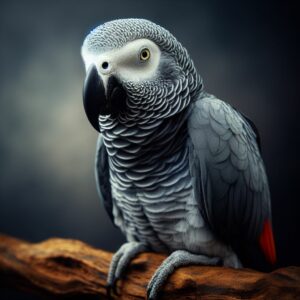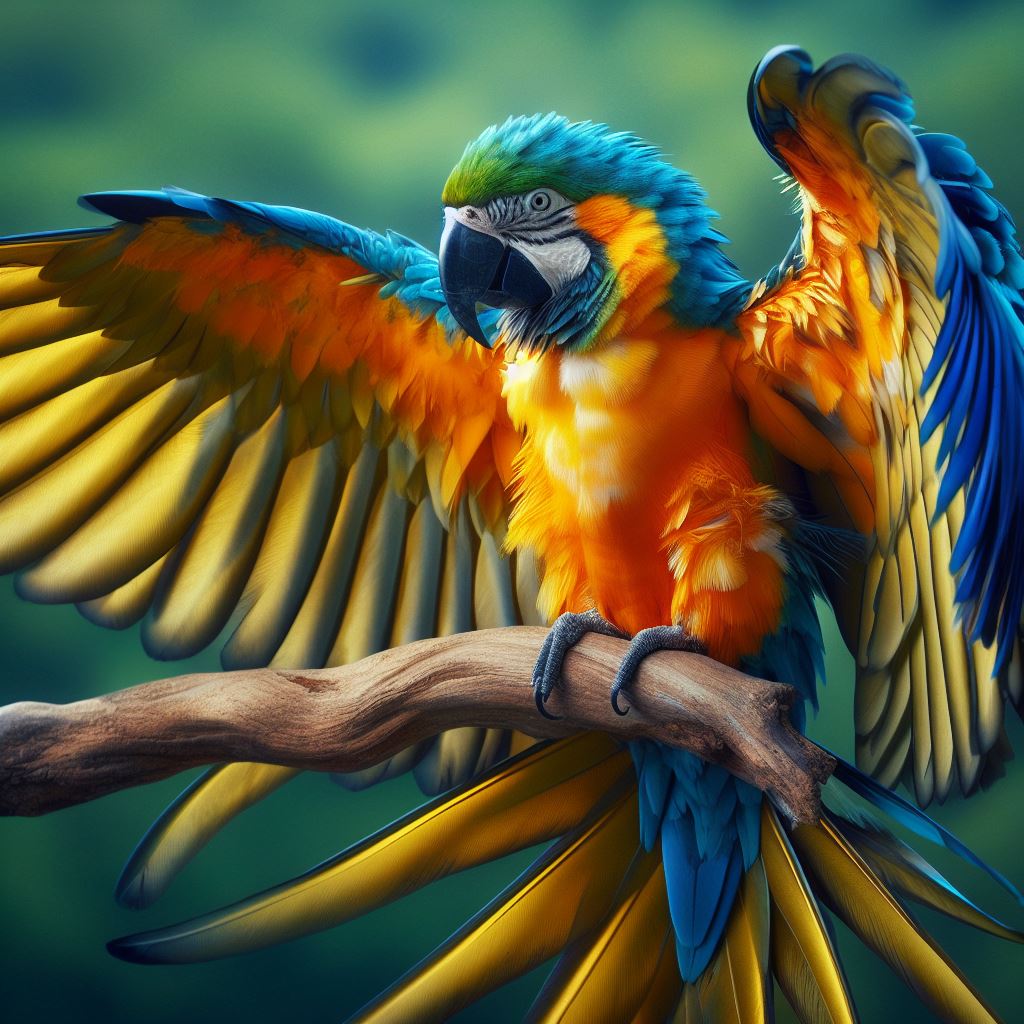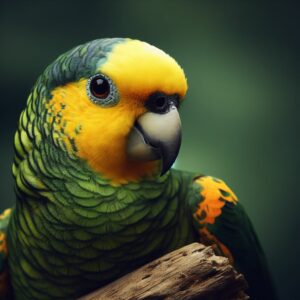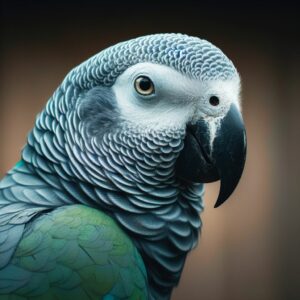Cockatoos are a distinctive group of parrots known for their striking appearance and playful personalities. They belong to the family Cacatuidae and are native to Australia, New Guinea, Indonesia, and nearby islands. There are about 21 different species of cockatoos, each with its unique characteristics and traits.
Physical Characteristics:
Cockatoos are easily recognizable due to their crested head feathers, which they can raise or lower based on their mood. They also have strong beaks and zygodactyl feet, which means they have two toes pointing forward and two backward, allowing them to grasp objects with great precision. Most cockatoos are white or light-colored, but some species have vibrant yellow, pink, or black markings.
Species and Diversity:
Cockatoos come in various species, including the Sulphur-crested Cockatoo, the Umbrella Cockatoo, the Galah, and the Palm Cockatoo, among others. Each species has its own habitat preferences, diet, and behavior patterns. For instance, the Palm Cockatoo is known for its large size and unique crest shape, while the Galah is easily identified by its pink and grey plumage.
Behavior and Intelligence:
Cockatoos are highly intelligent birds and renowned for their problem-solving abilities. They are also social creatures, often forming strong bonds with their human caregivers and fellow birds. Cockatoos are excellent mimics and can learn to imitate human speech and other sounds. However, their social nature also means they require a lot of attention, mental stimulation, and social interaction to thrive in captivity.
Importance of Studying Cockatoo Behavior
Studying cockatoo behavior is important for several reasons, both in their natural habitats and in captivity. Here are some key reasons why understanding cockatoo behavior is significant:
Conservation Efforts:
- Habitat Preservation: Understanding cockatoo behavior helps conservationists protect their habitats effectively.
- Endangered Species: Many cockatoo species are endangered; studying their behavior aids in creating conservation strategies to save these species from extinction.
Biodiversity and Ecology:
- Indicator Species: Cockatoos can serve as indicators of ecosystem health. Changes in their behavior might reflect environmental changes.
- Seed Dispersal: Cockatoos play a vital role in seed dispersal, influencing forest regeneration. Studying their behavior helps in understanding this ecological process.
Animal Welfare:
- Captivity: For those kept as pets, understanding their behavior is crucial for their well-being. Proper understanding helps in providing appropriate mental and physical stimulation, reducing stress, and ensuring overall welfare.
- Zoo and Sanctuaries: In facilities like zoos and sanctuaries, understanding behavior aids in creating enriching environments, promoting natural behaviors, and enhancing the quality of life for captive cockatoos.
Human-Wildlife Conflict:
- Crop Damage: In regions where cockatoos interact with agriculture, understanding their behavior helps in developing methods to prevent crop damage without harming the birds.
- Urban Areas: Cockatoos often inhabit urban areas; understanding their behavior aids in managing human-cockatoo interactions to prevent conflicts.
The Diverse World of Cockatoo
Geographic Distribution and Habitat
Cockatoos are native to Australasia, which includes Australia, New Guinea, Indonesia, and nearby islands. Each species has its own specific geographic distribution and habitat preferences:
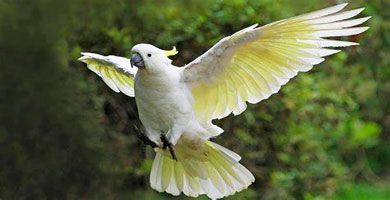
Sulphur-crested Cockatoo (Cacatua galerita)
- Geographic Distribution: Eastern and northern Australia, New Guinea, Indonesia, and nearby islands.
- Habitat: Wide range of habitats including forests, woodlands, savannas, and urban areas.

Galah Cockatoo(Eolophus roseicapilla)
- Geographic Distribution: Almost all of mainland Australia.
- Habitat: Open country, including grasslands, savannas, and agricultural areas. Also found in urban environments.
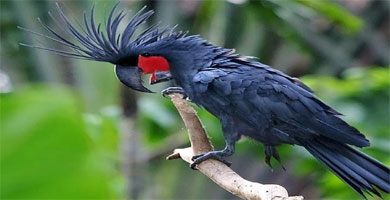
Palm Cockatoo (Probosciger aterrimus)
- Geographic Distribution: Northern Australia, New Guinea, and nearby islands.
- Habitat: Lowland tropical rainforests, mangrove forests, and woodland swamps.
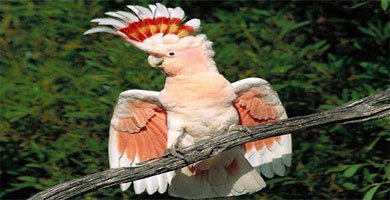
Major Mitchell’s Cockatoo (Lophochroa leadbeateri)
- Geographic Distribution: Inland areas of southeastern Australia.
- Habitat: Mulga woodlands, mallee, and other arid or semi-arid habitats.
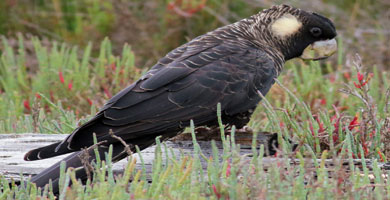
Carnaby’s Black Cockatoo (Calyptorhynchus latirostris)
- Geographic Distribution: Southwest Australia, including the Wheatbelt region and parts of the southwest coast.
- Habitat: Forests, woodlands, and heathlands. They often roost in tall trees near water sources.

Yellow-tailed Black Cockatoo (Calyptorhynchus funereus)
- Geographic Distribution: Southeastern Australia, from Queensland to South Australia and Tasmania.
- Habitat: Forests, woodlands, and coastal heathlands. They are often found in eucalypt forests.
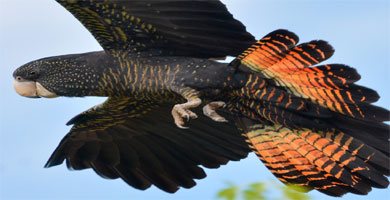
Red-tailed Black Cockatoo (Calyptorhynchus banksii)
- Geographic Distribution: Various subspecies live across northern and eastern Australia.
- Habitat: Forests, woodlands, and savannas. They prefer habitats with ample food sources like native seeds and insects.
Sulphur-crested Cockatoo (Cacatua galerita):
- Geographic Distribution: Eastern and northern Australia, New Guinea, Indonesia, and nearby islands.
- Habitat: Wide range of habitats including forests, woodlands, savannas, and urban areas.
Umbrella Cockatoo (Cacatua alba):
- Geographic Distribution: Tropical rainforests of Indonesia, including Halmahera, Bacan, Ternate, and Tidore islands.
- Habitat: Dense tropical rainforests prefer primary and tall secondary forests.
Galah (Eolophus roseicapilla):
- Geographic Distribution: Almost all of mainland Australia.
- Habitat: Open country, including grasslands, savannas, and agricultural areas. Also found in urban environments.
Palm Cockatoo (Probosciger aterrimus):
- Geographic Distribution: Northern Australia, New Guinea, and nearby islands.
- Habitat: Lowland tropical rainforests, mangrove forests, and woodland swamps.
Major Mitchell’s Cockatoo (Lophochroa leadbeateri):
- Geographic Distribution: Inland areas of southeastern Australia.
- Habitat: Mulga woodlands, mallee, and other arid or semi-arid habitats.
Carnaby’s Black Cockatoo (Calyptorhynchus latirostris):
- Geographic Distribution: Southwest Australia, including the Wheatbelt region and parts of the southwest coast.
- Habitat: Forests, woodlands, and heathlands. They often roost in tall trees near water sources.
Yellow-tailed Black Cockatoo (Calyptorhynchus funereus):
- Geographic Distribution: Southeastern Australia, from Queensland to South Australia and Tasmania.
- Habitat: Forests, woodlands, and coastal heathlands. They are often found in eucalypt forests.
Red-tailed Black Cockatoo (Calyptorhynchus banksii):
- Geographic Distribution: Various subspecies live across northern and eastern Australia.
- Habitat: Forests, woodlands, and savannas. They prefer habitats with ample food sources like native seeds and insects.
These geographic distributions and habitat preferences highlight the adaptability of cockatoos to various environments, from dense rainforests to open woodlands. However, many species are facing threats due to habitat loss, making it crucial to understand and preserve their natural habitats for their survival.
Intelligence Among Cockatoo
Problem-Solving Abilities: Cockatoo and Tools
Cockatoos, particularly the Goffin’s Cockatoo (Cacatua goffiniana), have been the focus of several studies showcasing their remarkable problem-solving abilities, including their use of tools. These studies demonstrate the high level of cognitive intelligence exhibited by these birds.
- Tool Making: Goffin’s Cockatoos have been observed using twigs to extract food from hard-to-reach places. They have also been shown to modify tools, shaping them to be more effective in solving specific problems. This ability to modify and create tools showcases their advanced problem-solving skills.
- Puzzle Solving: Cockatoos have been tested with various puzzles that require them to use tools to obtain a reward. They have demonstrated the ability to use sticks or other objects to reach food placed in challenging locations. This indicates their capacity to understand cause-and-effect relationships and apply this knowledge to problem-solving tasks.
- Innovative Problem Solving: Cockatoos have been observed in the wild using tools for different purposes, such as extracting grubs from tree bark. This shows not just problem-solving ability but also innovation, where they apply their knowledge in creative ways to solve new problems encountered in their environment.
- Social Learning: Cockatoos are excellent at learning from one another. When one cockatoo learns to use a tool to solve a problem, others in the group can quickly pick up on this technique through observation. This social learning aspect enhances their problem-solving abilities collectively as a group.
Cockatoo and Human Interaction
Cockatoos are highly social and intelligent birds, and their interactions with humans can be complex and varied. Here are some key points regarding cockatoos and human interaction:
As Pets:
- Bonding: Cockatoos form strong bonds with their human caregivers. They can become affectionate and attached to their owners, often seeking attention and companionship.
- Mimicry: Cockatoos are excellent mimics. They can learn words and phrases and imitate sounds, showcasing their intelligence and communication skills.
- Attention and Interaction: Cockatoos require a lot of social interaction and mental stimulation. Lack of attention or boredom can lead to behavioral issues such as feather plucking or aggression.
Challenges of Keeping Cockatoos as Pets:
- Longevity: Cockatoos have long lifespans, often living for several decades. Potential owners need to be aware of the long-term commitment involved in keeping a cockatoo as a pet.
- Destructive Behavior: Cockatoos have strong beaks and love to chew. Without proper toys and enrichment, they can damage furniture and other household items.
- Noise Levels: Cockatoos are vocal birds and can be quite loud, especially when seeking attention. This can be challenging for apartment dwellers or those with noise-sensitive neighbors.
Conservation and Protection:
- Illegal Trade: Cockatoos are often victims of the illegal pet trade. Efforts are made to curb this trade and protect wild populations from being exploited.
- Conservation Education: Cockatoos, as charismatic species, are used in conservation education efforts. Their appeal helps raise awareness about the importance of protecting their natural habitats.
Human-Wildlife Conflict:
- Crop Damage: In regions where cockatoos overlap with agriculture, they can cause damage to crops, leading to conflicts with farmers.
- Urban Areas: Cockatoos often inhabit urban areas, leading to interactions with humans. Proper management strategies are needed to ensure peaceful coexistence.
Conservation Measures for Cockatoo
Conserving cockatoo species is crucial due to the threats they face, including habitat loss, illegal pet trade, and human-wildlife conflicts. Several conservation measures can be taken to protect these unique and charismatic birds:
Habitat Preservation:
- Protected Areas: Establish and maintain protected areas, national parks, and wildlife reserves to conserve the natural habitats where cockatoos live.
- Reforestation: Support reforestation efforts in areas where habitats have been destroyed, ensuring the availability of suitable habitats for cockatoos.
- Community Engagement: Involve local communities in habitat preservation efforts, ensuring their livelihoods considering and promoting sustainable practices.
Research and Monitoring:
- Population Studies: Conduct population surveys and research studies to assess the status of different cockatoo species and their habitats.
- Behavioral Research: Study the behavior, ecology, and social dynamics of cockatoos to understand their needs and develop effective conservation strategies.
Combatting Illegal Trade:
- Law Enforcement: Strengthen law enforcement against illegal wildlife trade, imposing strict penalties for those involved in capturing, selling, or buying cockatoos illegally.
- Awareness Campaigns: Raise awareness about the consequences of the illegal pet trade, educating people about the importance of leaving these birds in their natural habitats.
Human-Wildlife Conflict Management:
- Crop Protection: Implement measures to protect crops without harming cockatoos, such as providing farmers with alternative methods to safeguard their livelihoods.
- Urban Planning: Develop urban planning strategies that consider cockatoo habitats, ensuring their presence in urban areas does not lead to conflicts.
Conservation Breeding and Reintroduction:
- Breeding Programs: Establish and support captive breeding programs to ensure genetic diversity and potentially reintroduce birds into the wild.
- Reintroduction: Carefully plan and execute reintroduction programs for captive-bred cockatoos, monitoring their progress and adapting strategies as needed.
Community Involvement and Education:
- Education: Educate local communities about the importance of cockatoos in the ecosystem and involve them in conservation efforts.
- Community-Based Conservation: Encourage community-based conservation initiatives, empowering local people to actively participate in protecting cockatoos and their habitats.
International Cooperation:
- Collaboration: Foster international collaboration between countries to protect migratory species and enforce regulations related to the trade and conservation of cockatoos.
- Research Sharing: Facilitate the exchange of research findings and conservation strategies between scientists, conservationists, and organizations globally.
Climate Change Mitigation:
- Climate Change Adaptation: Implement strategies to help cockatoo populations adapt to climate change, which can affect their habitats and food sources.
By combining these efforts and involving local communities, governments, NGOs, and international organizations, we can work towards ensuring the survival of cockatoo species for future generations.
Challenges and Threats Faced by Cockatoo
Cockatoos face numerous challenges and threats, both natural and human-induced, which significantly impact their populations and overall well-being. Here are some of the key challenges and threats faced by cockatoo species:
Habitat Loss:
- Deforestation: Destruction of native forests for agriculture, logging, and urban development reduces the available habitats for cockatoos.
- Land Conversion: The conversion of natural habitats into agricultural land and plantations diminishes the areas where cockatoos can find food and shelter.
Illegal Wildlife Trade:
- Capture for Pets: Cockatoos are often captured illegally for the exotic pet trade. This activity severely depletes wild populations and disrupts their social structures.
- Demand for Feathers: Cockatoo feathers are sometimes used in the illegal market for traditional ornaments and crafts, further threatening their populations.
Climate Change:
- Altered Habitats: Climate change can modify habitats, making them less suitable for cockatoos. Changes in weather patterns and food availability can negatively impact their survival.
- Extreme Weather Events: Increased frequency and intensity of storms, droughts, and heat waves can destroy nests, damage habitats, and disrupt feeding patterns.
Human-Wildlife Conflict:
- Crop Damage: Cockatoos, especially in agricultural areas, are seen as pests due to their crop-damaging activities, leading to conflicts with farmers.
- Urbanization: Cockatoos adapting to urban environments can face challenges like poisoning, electrocution, and habitat fragmentation.
Predation and Competition:
- Introduced Species: Invasive predators like rats and feral cats prey on cockatoo eggs, chicks, and even adult birds, affecting their reproductive success.
- Competition for Food: Competition with other species, both native and invasive, for food resources can strain cockatoo populations.
Disease and Health Issues:
- Avian Diseases: Cockatoos are susceptible to avian diseases, some of which are introduced by domestic birds, impacting their health and mortality rates.
- Lead Poisoning: Ingestion of lead-based products or contaminated food sources can lead to lead poisoning, causing severe health problems.
Limited Reproductive Success:
- Low Reproductive Rates: Cockatoos often have low reproductive rates, with few chicks reaching maturity. This makes it challenging for populations to recover from declines.
Future Prospects for Cockatoo
The prospects for cockatoo species depend significantly on the conservation efforts and initiatives undertaken to address the challenges they face. While the situation is challenging, there are reasons for hope and strategies that can improve the outlook for these iconic birds:
Conservation Awareness and Education:
- Public Engagement: Increasing public awareness about the importance of cockatoos in ecosystems and fostering a sense of responsibility can lead to more responsible behavior towards these birds.
- Education Programs: Implementing educational initiatives in schools and communities can promote a culture of conservation, ensuring that future generations understand and value these species.
Habitat Protection and Restoration:
- Protected Areas: Strengthening existing protected areas and creating new ones can provide safe havens for cockatoos, preserving their natural habitats.
- Reforestation: Reforestation efforts can restore lost habitats, providing essential resources for cockatoos.
Research and Monitoring:
- Scientific Research: Continued research on cockatoo behavior, ecology, and genetics can provide valuable insights for
Conclusion
In conclusion, cockatoos, with their vibrant plumage, intelligence, and unique personalities, are among the most captivating and beloved species of birds in the world. However, their future is at a crossroads, facing numerous challenges that threaten their existence. From habitat loss and illegal wildlife trade to climate change and human-wildlife conflicts, these magnificent birds are under constant pressure.
Efforts to conserve cockatoos are multifaceted and require a holistic approach. Conservationists, scientists, governments, and local communities must work together to protect their natural habitats, combat illegal trade, and raise public awareness about their significance in the ecosystem.
The prospects for cockatoos are not without hope. With dedicated conservation initiatives, stringent law enforcement, sustainable practices, and global cooperation, we can secure a brighter future for these iconic birds. Through our collective efforts, we can ensure that cockatoos continue to enchant us with their beauty and intelligence, thriving in the wild for generations to come. Ultimately, their survival is not just a testament to our commitment to conservation but also to our respect for the diverse and magnificent life forms that share our planet.
